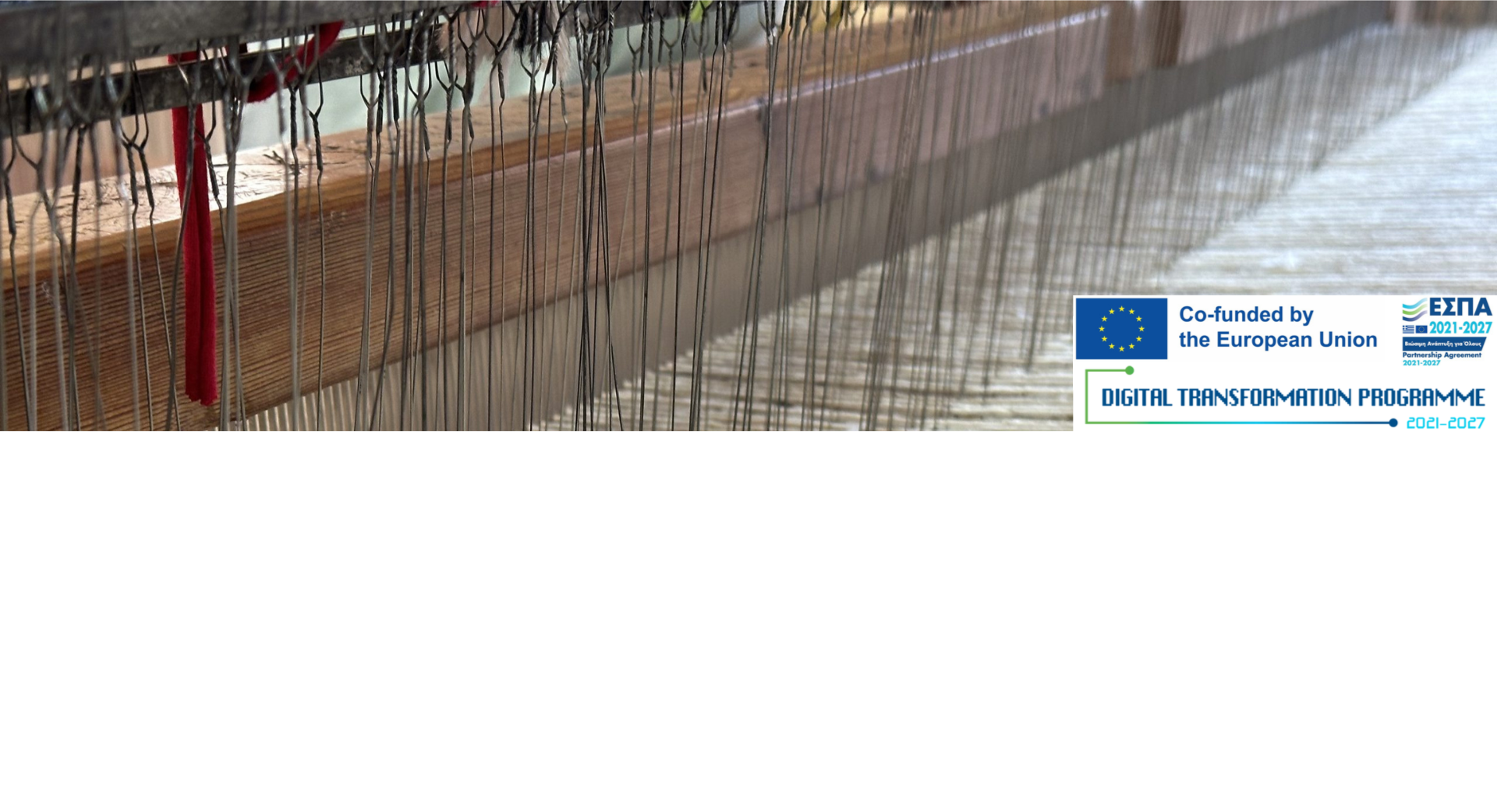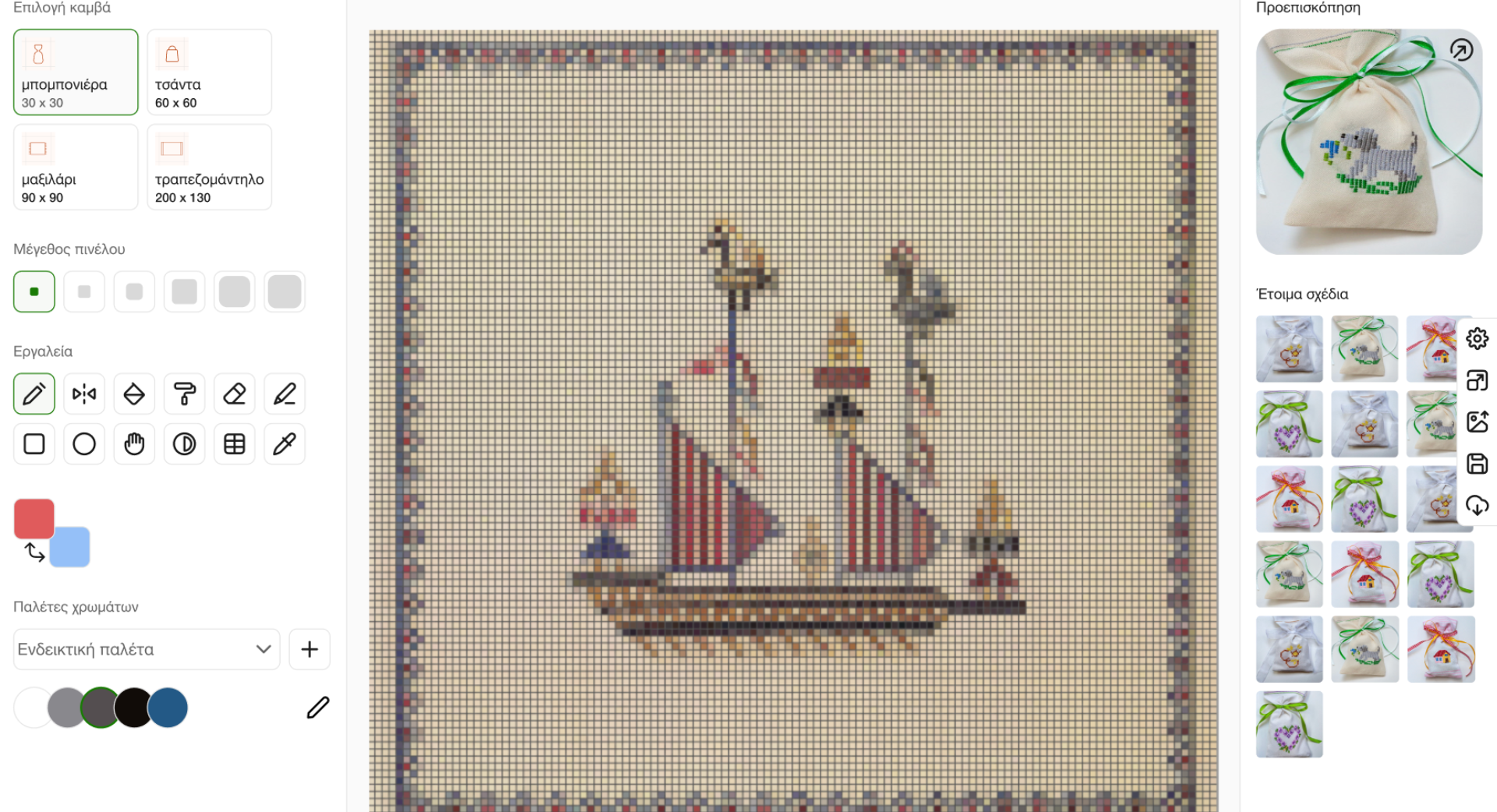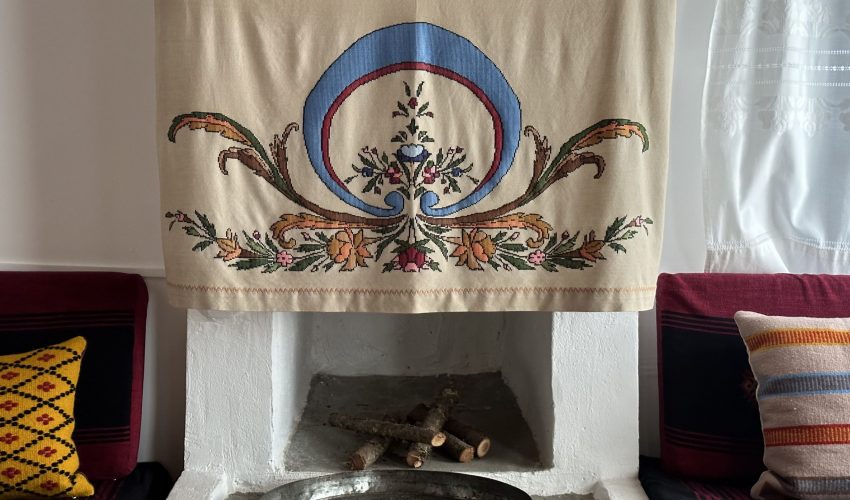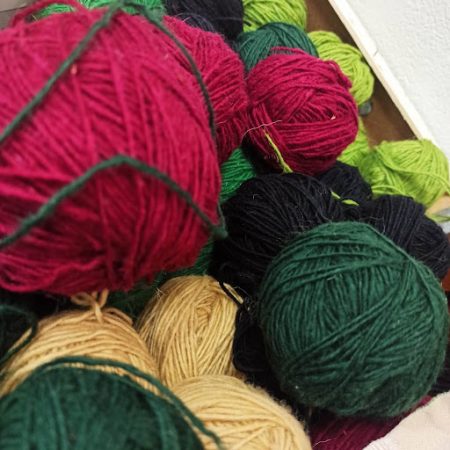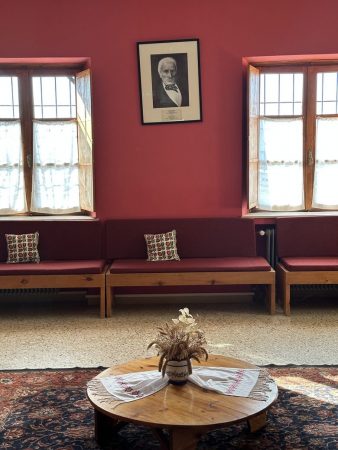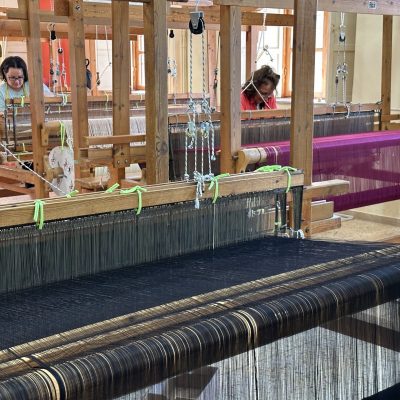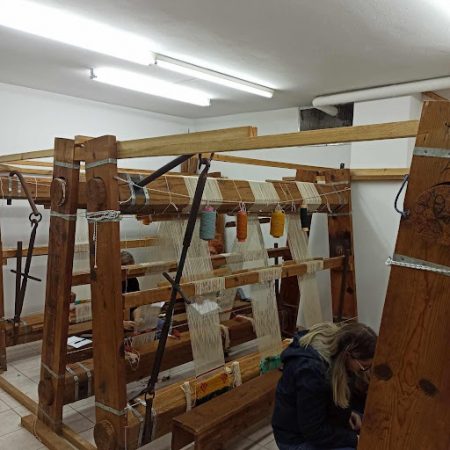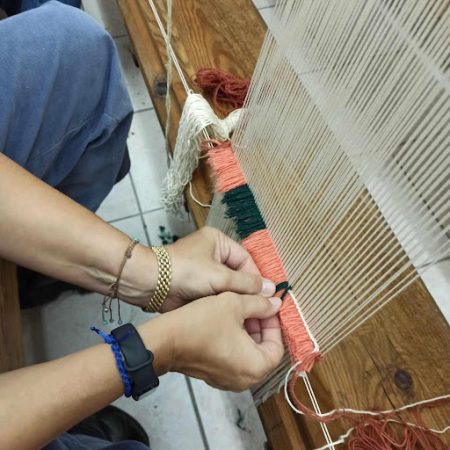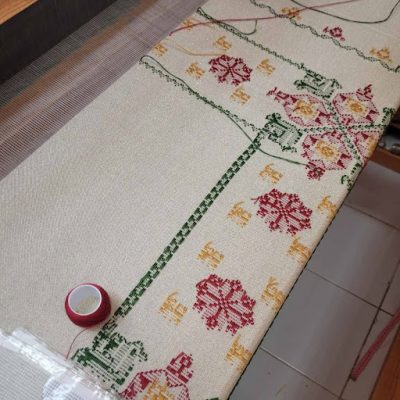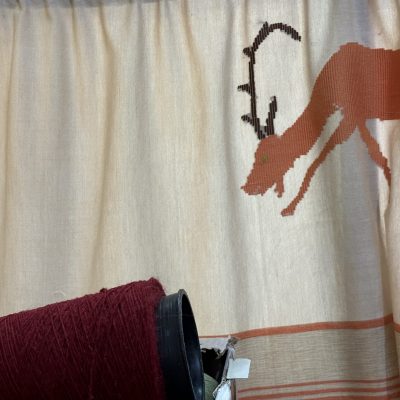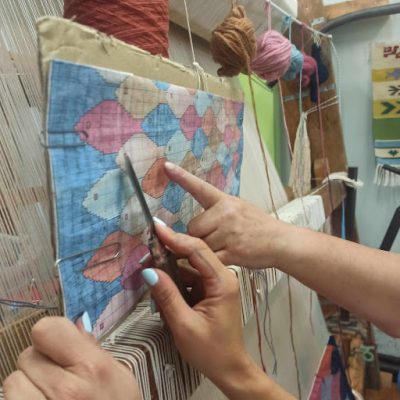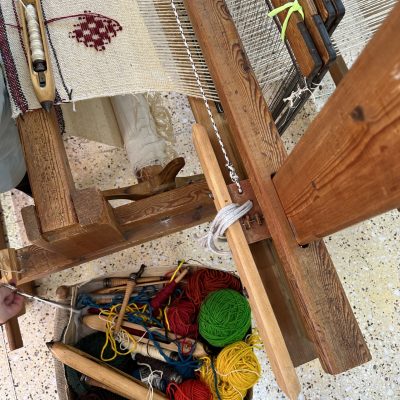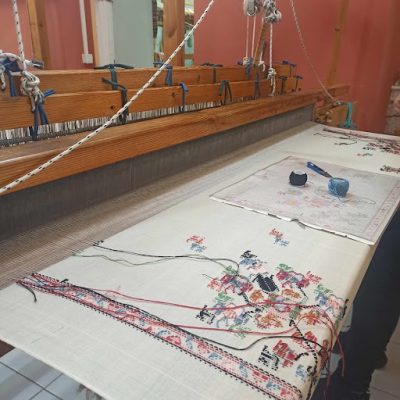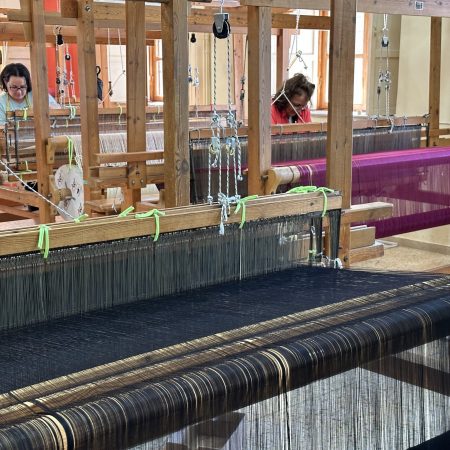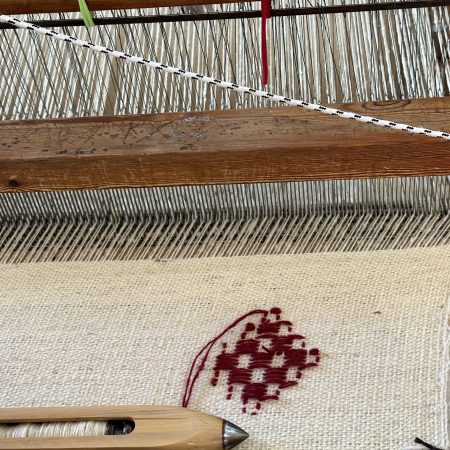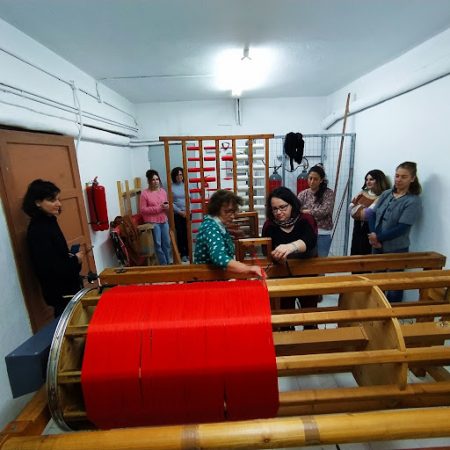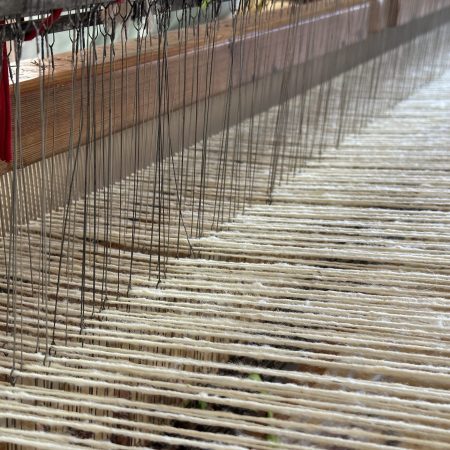The Weaving Art
Weaving characterizes the area of Epirus and, by being part of its identity, connects it with the cultural heritage of Zagori. It is a form of folk art stronly connected with multiple aspects of the everyday life of the place and has been passed down from generation to generation. The oldest weavings themselves provide distinct information about the techniques, the colour play, the patterns and the materials used. Weaving links folklore to history, marking the particular place’s economy and social life at certain times.
The use of the loom often gave autonomy to the household and covered the basic needs of the family by amplifying the household economy. Furthermore, it depicted in the best possible way the imagination, creativity and traditional technique of the local weavers.
The residents of Epirus are the key holders and the continuators of a long cultural and civilizational tradition.
The Rizarios Handicraft Centre, legacy of the national benefactors Manthos and Georgios Rizaris, in their hometown Monodendri, is active in the field of weaving and has been operating continuously from 1979 to this day.
The operation of the Rizarios Handicraft Center aims to promote the cultural heritage of Zagori, utilizing elements of the place that are still active.
The promotion of weaving at a local, national and international level, contributes to not only local development, but could also be a proposal for alternative forms of tourism. This effort has also strengthened the file for the promotion of the cultural identity of the region to UNESCO, which led to the inclusion of the Zagori region in the World Heritage Sites.



